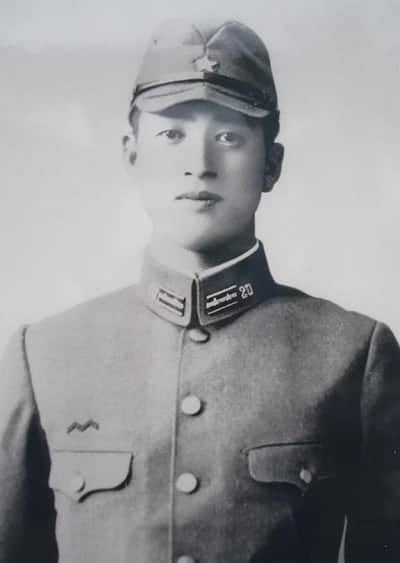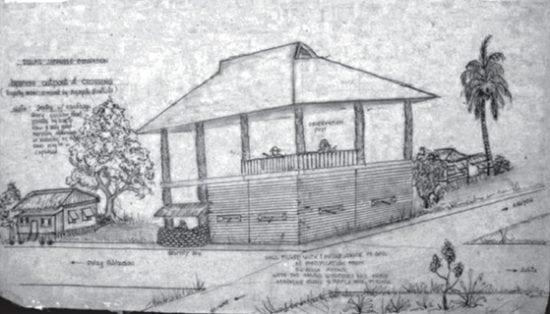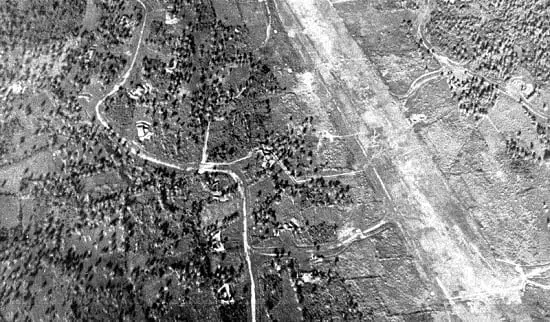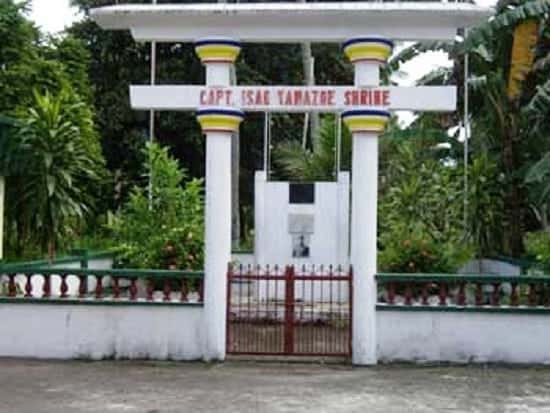The WWII Japanese Officer Who Became An Unlikely Philippine Hero

In superhero movies, the characters are either the “good guys” or the “bad guys.” Heroes always win and the villains end up defeated. This is the ideal world we believed as a kid.
The reality, however, is way more complicated. Heroes sometimes become the bad guys while those who are supposed to be villains become unlikely heroes.
Also Read: The Japanese Woman Who Saved Hundreds of Filipinos During WWII
Desperate times call for desperate measures, they always say. And nothing could have proven this better than what happened during the Second World War.
Filipinos who lived during those dark days were likened to a bibingka. Just like how the traditional rice cake is cooked by putting heat above and below it, they were also torn between the clashing forces of the Japanese and the guerrilla.
Things back then are not as simple as choosing between black and white. Some Filipinos chose to side with the enemies not because they want to, but they have to. As for the Japanese, they were tasked to keep a steady grip on the Philippines and destroy anything or anyone that got in the way. Nothing in their job description suggested that they should show compassion towards the Filipinos.

But a young Japanese officer known by the name “Captain Yamasoy” thought otherwise. In 1943, he was assigned to head the garrison at Dulag, one of the oldest towns in Leyte and situated 40 kilometers south of Tacloban. At that time, there were many Japs stationed in the area, so much so that the town center was once dubbed as “Little Tokyo.”
Related Article: The Tragic Tale of These Japanese Brothers Will Change How You Picture WWII
“Captain Yamasoy” could have been a cruel leader. He could have spread terror throughout Dulag so those who were thinking of relaying information to the guerrillas wouldn’t even try.
As it turned out, however, the Japanese officer became a living proof that you can never judge a book by its cover.
Jovito Bautista, who was only 13 years old when “Captain Yamasoy” arrived in Dulag, could only remember good things about the Japanese commander. In a 2008 interview, Bautista described him as “a good leader, a smiling captain and a friend to everyone.”

As head of the garrison, “Captain Yamasoy” (whose real name is Capt. Isao Yamazoe) ordered his men not to abuse the locals–including the prisoners. His friendship with the locals saw him playing judo and even serenading with them.
To foster friendly ties between the locals and the Japanese, “Captain Yamasoy” went as far as initiating “morning calisthenics (radio taiso), athletics (tennis and basketball), and cultural shows, dances and movie screenings for the entertainment of the residents.”
READ: How Cebuano Fishermen Helped Defeat the Japanese in World War II
As if that’s not enough, he also encouraged the families to plant root crops and vegetables on their own backyards so no one would go hungry. The children, on the other hand, continued their education inside Japanese-run schools.
Needless to say, “Captain Yamasoy” became popular and loved by the people of Dulag. His genuine concern for the welfare of the locals was finally tested when he learned of the guerrillas’ plan to raid their garrison. He knew that such an attack would mean death not only for the Jap soldiers but for all the innocent civilians living in the poblacion.
Wasting no time, Yamasoy asked the guerrilla forces to meet him and his men outside the town proper. By doing so, civilians would be unharmed.
Also Read: The WWII Japanese Soldier Who Hid in Philippine Jungle For 29 Years
Both parties agreed. Sadly, “Captain Yamasoy” was on his way to the battleground when they were ambushed in Barangay Curva (now Del Pilar). He was only 32 years old.
When they received the news of his death, the locals mourned. The church bell tolled from morning to night. They also built a small memorial or cenotaph to honor the slain commander. It was later rebuilt into a 3-meter-high structure by the Dulag municipal government.
Everything changed after Yamasoy’s death. The new garrison commander took over and discontinued all of Yamasoy’s programs. The Dulag locals, including the children, were forced to work on the airfields to the west of the town, and received soap, sugar, and salt in exchange for their labor.

But of all the tragedies that happened in Dulag, it was the bombardment in October 1944 that was the most tragic. Ironically, it happened shortly before the famous Leyte Landing that signaled the end of the Japanese Occupation.
Related Article: The Forgotten Story of Japanese Christians – Philippines’ First Refugees
Many people stayed in Dulag because the guerrilla forces failed to notify them. Either that or the strong typhoon made it impossible for the pamphlets dropped by American planes to reach them. As a result, hundreds of people–including the town mayor and his seven-year-old daughter–died instantly when the town was destroyed by the pre-invasion bombardment.

Today, a memorial for both “Captain Yamasoy” and the Dulagueños who died during the war stand quietly in the historic town. They serve as a reminder that even during the darkest of times, compassion and hope can still prevail. That kindness knows no boundaries. And that the people we thought were villains could turn into heroes when we least expect it.
No wonder why young diarist Anne Frank once said: “In spite of everything, I still believe that people are really good at heart.”
References
Borrinaga, G. (2010). Human Bibingka: Leyteños under Japanese Rule (1942-1944). The Journal Of History, 56, 214-241.
Labro, V. (2002). Leyte wartime tales refuse to die. Philippine Daily Inquirer, p. A16. Retrieved from https://goo.gl/Q2e4S0
Sasaki, M. (2013). Typhoon-hit Filipinos lament damage to cenotaph for ‘special’ Japanese soldier. The Asahi Shimbun. Retrieved 18 March 2016, from http://goo.gl/d7SpBj
Written by FilipiKnow
FilipiKnow
FilipiKnow strives to ensure each article published on this website is as accurate and reliable as possible. We invite you, our reader, to take part in our mission to provide free, high-quality information for every Juan. If you think this article needs improvement, or if you have suggestions on how we can better achieve our goals, let us know by sending a message to admin at filipiknow dot net
Copyright Notice
All materials contained on this site are protected by the Republic of the Philippines copyright law and may not be reproduced, distributed, transmitted, displayed, published, or broadcast without the prior written permission of filipiknow.net or in the case of third party materials, the owner of that content. You may not alter or remove any trademark, copyright, or other notice from copies of the content. Be warned that we have already reported and helped terminate several websites and YouTube channels for blatantly stealing our content. If you wish to use filipiknow.net content for commercial purposes, such as for content syndication, etc., please contact us at legal(at)filipiknow(dot)net